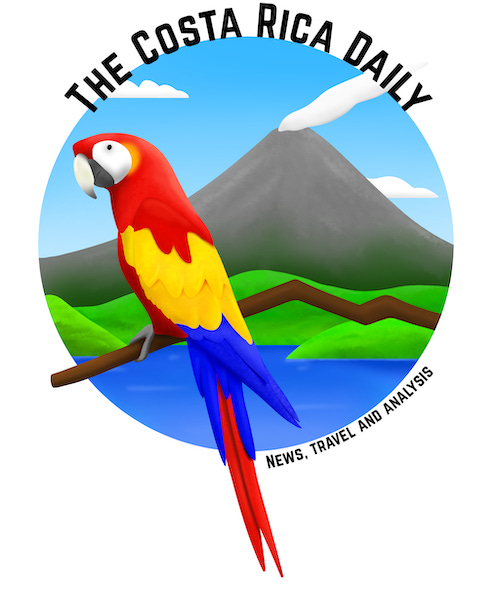Costa Rica’s reliance on Facebook
Costa Ricans now rely more on social media than on newspapers to inform themselves.
A significant data breach has exposed the personal information of 500 million Facebook users from more than 100 different countries. Among them are nearly 1.5 million Costa Ricans.1
That there are so many Ticos on Facebook should come as no surprise. It has been Costa Rica’s most popular social network for more than a decade. Two-thirds of Costa Ricans are now active Facebook users.
Costa Ricans on Facebook is not inherently a bad thing. The problem arises when a breach compromises personal data … or when misinformation spreads rapidly via the social media platform. Unfortunately, the latter is much more common than the former.
Misinformation spread via Facebook has real consequences — especially since Costa Ricans now rely more on social media than on newspapers to inform themselves. In one notable example, false posts helped instigate 2018’s large anti-immigrant protest during which dozens of people were arrested.
Just in recent weeks, misinformation about political campaigns, vaccines and religion have all gone viral on Facebook in Costa Rica.2
This is especially troublesome as Costa Rica approaches a presidential election of its own (February 2022).
Facing criticism ahead of last year’s United States elections, Facebook (and Twitter, and others) revamped their content policies. But similar misinformation in Costa Rica and elsewhere is even less moderated.
There is no quick fix to stop the spread of maliciously created misinformation. It’s easy to create, consume and share content — easier, it should be said, than fact-checking every claim you see online. At the same time, strict moderation policies limit freedom of speech, which poses a legal and ethical debate that is well beyond the scope of this story.
All that being said: Costa Ricans use Facebook a lot, and many Ticos rely on social media as their primary news source. It’s highly unlikely Facebook (and Twitter, etc.) will strictly moderate misinformation during the Costa Rican elections. And that may very well pose a big problem.
How to avoid being fooled
From the News Literacy Project.
Use the steps below to avoid being manipulated, fooled or exploited by viral rumors, misleading memes, impostor news sites and fake images.
1. Check your emotions: What’s your first reaction?
Are you angry? Outraged? Curious? Excited?
Misinformation often tries to hijack our rational minds with emotional appeals.
2. Determine the purpose of what you’re reading, watching or hearing:
Is it a news report? An opinion column? An ad? Satire?
Knowing what it is helps you decide whether to trust it.What do you know about the source? Does it have an “About Us” (or similar) page? Does it provide biographical or contact information for its employees and contributors?
3. Be aware of your biases:
Are you assuming — or hoping — that it’s true? Or that it’s false?
You’re more likely to be less critical of information that “feels” right.
4. Consider the message:
Is it “too perfect”? Is it overtly or aggressively partisan? Does it use loaded language, excessive punctuation — !!!— or ALL CAPS for emphasis?
Does it claim to contain a secret or tell you something that “the media” doesn’t want you to know?
5. Search for more information:
Are reputable news outlets reporting the same thing? Have independent fact-checkers contested or debunked it? Can you determine where it first appeared?
6. Go deeper on the source:
Search for its name, then do a WHOIS search on its web domain. What do you find?
Does it use social media responsibly? Do its posts and tweets appear reliable?
Does it promptly correct errors in a transparent manner?
7. Then go deeper on the content itself:
Search the byline: Is it a real person or a made-up name?
Is what is being reported old or outdated information?
Can you confirm key details (date, time, location)?
Search any quotes used: Are they accurate? Are they presented in context?
Do a reverse image search on photos and graphics: Do they appear elsewhere online? If so, are they shown in a different context? Have they been altered?
REMEMBER:
Visual misinformation is compelling. People instinctively trust images more than words. Misinformation peddlers often try to use this against you.
Convincing fakes are easy to make. Digital tools, such as Photoshop, and “create a fake” websites enable anyone to manipulate or falsify just about anything — social media posts, news reports, images and videos.
Bots and trolls are everywhere on social media. Not every account represents a person, and not all people express what they really think.
Information is the basis for decisions and actions. Even if you’re not fooled by a piece of misinformation, someone else whose decisions affect others may be. Help debunk examples of misinformation whenever you see them!
Facebook fun facts
WhatsApp is also owned by Facebook. It is used by more than 80% of all Costa Ricans, including by the highest levels of government, police and healthcare providers. Certainly, a data breach here would be devastating.3
Instagram is also owned by Facebook. The most common hashtags in Costa Rica are: #CostaRica, #PuraVida, #travel, #nature and #photography. Not too clever.
Support The Costa Rica Daily
We strive to provide high-quality, ad-free, thought-provoking and accurate content. Your donations help make this possible:
La Nación’s “No Coma Cuento” does a good job of correcting the most egregious misinformation. The Costa Rican Presidency launched a similar effort in 2019; they gave up within a year.
WhatsApp chats are, at least, encrypted.



